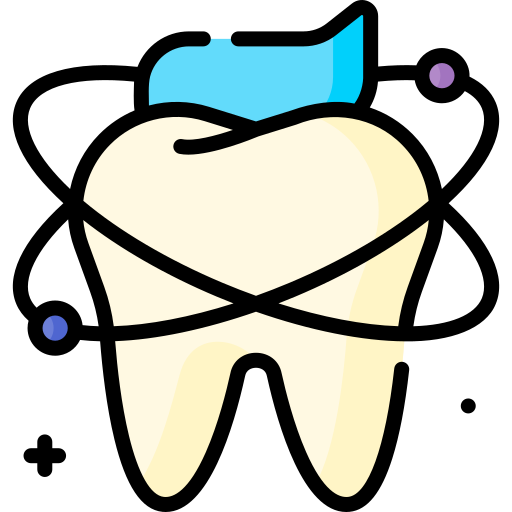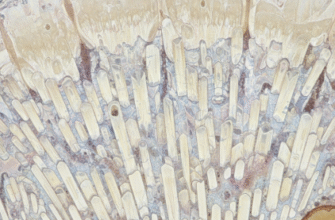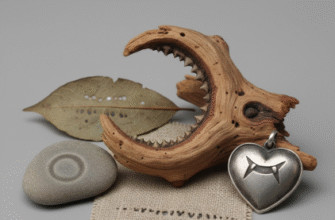Tucked away at the back of our jaws, often unseen and unsung, are the dental workhorses: our molars. These are not the flashy front teeth, the incisors and canines, designed for grabbing and tearing. Instead, molars are the heavy lifters, the grinders, the millstones of our mouths, playing an absolutely critical role in the first stage of digestion. Without their diligent service, breaking down food into manageable, digestible pieces would be an incredibly arduous task, impacting not just our ability to enjoy a varied diet but also our overall nutrition.
Imagine trying to eat a crunchy carrot stick or a hearty piece of steak using only your front teeth. It would be a struggle, to say the least! Molars, with their broad, sturdy surfaces, are specifically engineered for the task of pulverizing food, transforming large chunks into a soft bolus ready for swallowing. This initial mechanical breakdown is paramount, as it vastly increases the surface area of food particles, making it easier for digestive enzymes further down the line to do their job effectively. So, while they might not get the spotlight, molars are truly foundational to our ability to nourish ourselves.
What Are These Mighty Molars?
To truly appreciate these champions of chewing, let’s delve a little deeper into their specific characteristics. They are distinct from other teeth in several key ways, all of which contribute to their specialized function. Their very name, derived from the Latin ‘molaris dens’, meaning ‘millstone tooth’, hints at their purpose.
Anatomy of a Grinder
Molars are generally the largest teeth in the human mouth, characterized by their wide, flat, or slightly rounded chewing surfaces, technically known as occlusal surfaces. Unlike the sharp, single points of canines or the blade-like edges of incisors, molar surfaces are adorned with multiple projections called cusps. These cusps are like miniature mountains and valleys. When the upper and lower molars come together, these cusps interdigitate – meaning they fit into the grooves and fossae (depressions) of the opposing teeth – creating an efficient grinding mechanism. The number and arrangement of cusps can vary slightly between different molars and even between individuals, but their presence is a defining feature.
Beneath the gumline, molars are anchored firmly into the jawbone by multiple roots. This is another significant difference from most incisors and canines, which typically have a single root. Upper molars usually boast three roots, while lower molars commonly have two. This multi-root system provides incredible stability and support, necessary to withstand the substantial forces generated during vigorous chewing. Think of it like a tripod versus a monopod; the broader base of support offered by multiple roots makes molars far more resistant to being dislodged or loosened by the pressures of mastication.
The Molar Line-Up
In a full adult dentition, there are typically twelve molars, arranged in groups of three at the back of each quadrant of the mouth: upper right, upper left, lower right, and lower left. These are known as the first, second, and third molars, numbered from the front of the mouth towards the back.
The first molars, often called “six-year molars” because they usually erupt around the age of six, are particularly important. They are typically the first permanent teeth to emerge behind the baby teeth, without replacing any, and act as a cornerstone for the developing dental arch. Their early arrival and large size mean they play a significant role in establishing the bite and guiding the eruption of other permanent teeth. They are often the largest and strongest of the molars.
Following them are the second molars, or “twelve-year molars,” which usually make their appearance around the age of twelve. These teeth erupt just behind the first molars and continue to expand the chewing surface available, adding more grinding power and efficiency to the masticatory system as a child grows and their dietary needs change. They closely resemble the first molars in shape and function, though they might be slightly smaller.
Finally, there are the third molars, more commonly known as wisdom teeth. These are the last teeth to erupt, typically between the ages of 17 and 25, if they erupt at all. For many people, third molars may not develop, or they may not have enough space to erupt properly into a functional position. Their contribution to chewing can be minimal, especially in modern diets, and they are often a topic of discussion for different reasons related to their eruption path. However, when fully erupted and aligned, they can contribute to the overall molar grinding surface.
The Mechanics of Mastication: How Molars Work
The primary job of molars – mastication, or chewing – is a complex biomechanical process. It’s not just simple up-and-down chomping; it involves coordinated movements of the jaw, tongue, and cheeks, with molars at the very heart of the action. Their design is no accident; it’s a marvel of natural engineering perfectly suited for their demanding role.
Unleashing Grinding Power
When you bite down on food, especially something tough or fibrous, your molars bear the brunt of the force. The powerful muscles of mastication, such as the masseter and temporalis muscles, contract to bring the upper and lower jaws together. As the lower molars glide against the upper molars, the cusps and grooves interact like a sophisticated set of gears. Food trapped between these surfaces is crushed, sheared, and ground. This isn’t just a vertical crushing motion; there’s also a slight side-to-side and front-to-back component, allowing for a thorough pulverization. This complex movement ensures that food is broken down from various angles, maximizing efficiency.
One can liken the action of molars to that of a traditional mortar and pestle or a pair of millstones. The broad, relatively flat surfaces provide the platform, while the cusps act like the grinding elements, systematically reducing the size of food particles. The multiple roots ensure these “millstones” remain stable under the significant pressure, which can be surprisingly high during forceful chewing.
The Advantage of Surface Area
The sheer size of the occlusal surface of a molar is a key factor in its effectiveness. A larger surface area means more contact with food per chew. The cusps further enhance this by creating an uneven terrain. This topography isn’t random; the peaks (cusps) of the lower molars are designed to fit into the valleys (fossae) of the upper molars, and vice versa. This interlocking arrangement ensures that food is thoroughly milled rather than just flattened. It traps food particles, subjecting them to intense grinding forces as the teeth move across each other. This maximizes the breakdown with each chewing stroke, making the process far more efficient than if the surfaces were perfectly smooth.
Paving the Way for Digestion
The work done by molars is the crucial first step in the entire digestive process. By thoroughly grinding food, they dramatically increase its surface area. Think about trying to dissolve a large sugar cube versus granulated sugar; the granulated sugar dissolves much faster because more of it is exposed to the solvent. Similarly, finely chewed food presents a much larger surface area for digestive enzymes in the saliva, stomach, and intestines to act upon. This means nutrients can be broken down and absorbed more effectively and completely by the body.
Furthermore, the act of chewing stimulates the production of saliva. Saliva not only moistens the food, making it easier to swallow, but also contains enzymes like amylase, which begins the breakdown of carbohydrates right there in the mouth. Well-chewed food is well-mixed with saliva, kick-starting the chemical digestion process even before the food bolus leaves the oral cavity. So, efficient molars contribute not just to mechanical digestion but also enhance the initial stages of chemical digestion.
Caring for These Chewing Champions
Given their critical role and their location at the back of the mouth, molars require diligent care to keep them healthy and functioning optimally throughout life. Their complex surfaces, perfect for grinding, can also be challenging to clean thoroughly.
The intricate grooves, pits, and fissures on the chewing surfaces of your molars are fantastic for breaking down food. However, these same features can easily trap tiny food particles and plaque-forming bacteria. If not cleaned meticulously, these areas can become prime spots for decay to start, making molars particularly vulnerable to cavities. Consistent and careful cleaning is therefore paramount for their long-term health.
When brushing, it’s vital to pay special attention to your molars. Angle your toothbrush to ensure the bristles reach all their surfaces – the cheek side, the tongue side, and especially the all-important chewing surface. Use gentle, circular motions or short back-and-forth strokes to dislodge any trapped debris from the nooks and crannies. Don’t rush this process; give your molars the time and attention they deserve. Reaching those far-back third molars, if you have them and they are functional, can be tricky but is just as important.
Flossing is also non-negotiable when it comes to molar care. Because molars are broad and sit tightly next to each other, the spaces between them are common areas for food and plaque to accumulate, areas your toothbrush bristles simply cannot reach effectively. Gently guide the floss between each molar, curving it around the side of each tooth in a C-shape and moving it up and down to clean beneath the gumline. This helps prevent cavities between the teeth and keeps the gums around your molars healthy.
Finally, while good home care is the foundation, regular visits to a dental professional are essential. They can perform thorough cleanings, identify any potential issues early on, and provide guidance tailored to your specific oral health needs. They have the tools and expertise to clean areas you might miss and can help ensure your heavy lifters remain in top working condition for years to come.
An Ode to the Unsung Heroes
Our molars may not be the stars of our smile, but they are undeniably the powerhouse performers of our oral cavity. From the first bite of the day to the last, these sturdy grinders work tirelessly, often without a second thought from us, to prepare our food for nourishment. Their intricate design, from the broad, cusped surfaces to the strong, multi-rooted anchors, is a testament to their specialized and vital function in breaking down a vast array of foods.
So, the next time you’re enjoying a satisfying meal, take a moment to appreciate the incredible work being done by these unsung heroes at the back of your mouth. Understanding their importance and dedicating a little extra care to them can go a long way in maintaining not just your oral health, but your overall well-being. They truly are masters of mastication, the heavy lifters that make every meal possible.








